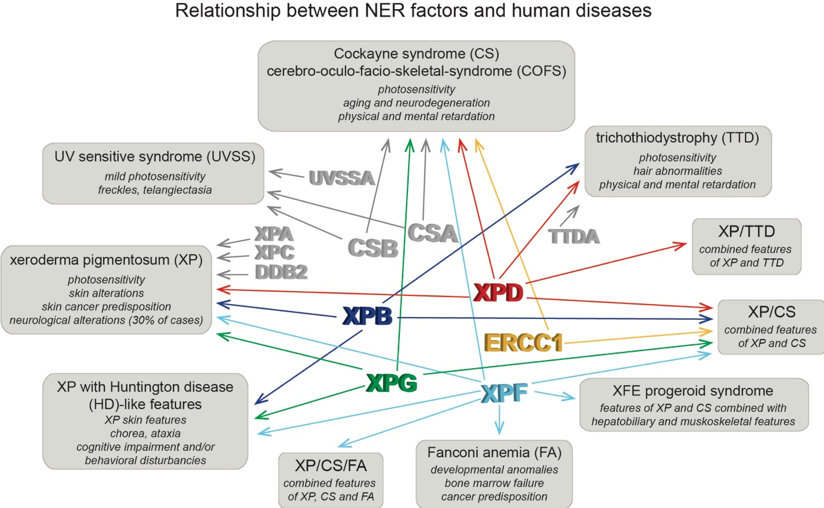Cellular and molecular characterization of patients affected by NER syndromes
Nucleotide excision repair (NER) is an essential DNA repair pathway devoted to the removal of bulky lesions such as photoproducts induced by the ultraviolet (UV) component of solar radiations.
Deficiencies in NER typically result in a group of distinct disorders showing puzzling clinical and genetic heterogeneity. NER syndromes range from the mild UV sensitive syndrome (UVSS) to the cancer-prone xeroderma pigmentosum (XP) and the neurodevelopmental/progeroid conditions trichothiodystrophy (TTD), Cockayne syndrome (CS) and cerebro-oculo-facio-skeletal-syndrome (COFS). A complicated genetic scenario subsists in which different genes may result in the same disease as well as the same gene may be linked to different clinical entities. Overlap syndromes with combined hallmark features of different NER disorders can also occur and sporadic presentations showing extra features of the haematological disorder Fanconi Anemia or neurological manifestations mimicking Hungtinton disease-like syndromes have been described.

Since many years the laboratory has been assisting clinicians in their diagnosis of NER-related syndromes. This activity involves:
- i) in vitro stabilization of primary cell strains (fibroblasts and keratinocytes) from skin biopsies and lymphoblastoid cell lines from blood samples of patients and their relatives;
- ii) evaluation of the DNA repair efficiency following UV irradiation and complementation tests;
iii) identification of the disease gene and causative mutations.
Collection and characterisation of cells from NER patients provides the link with the clinic and the starting point for all our research activity.
Collaborations
-Gianna Zambruno (Ospedale Pediatrico Bambino Gesù, Roma)
-Elena Dellambra (Istituto Dermopatico dell’Immacolata, Roma).
